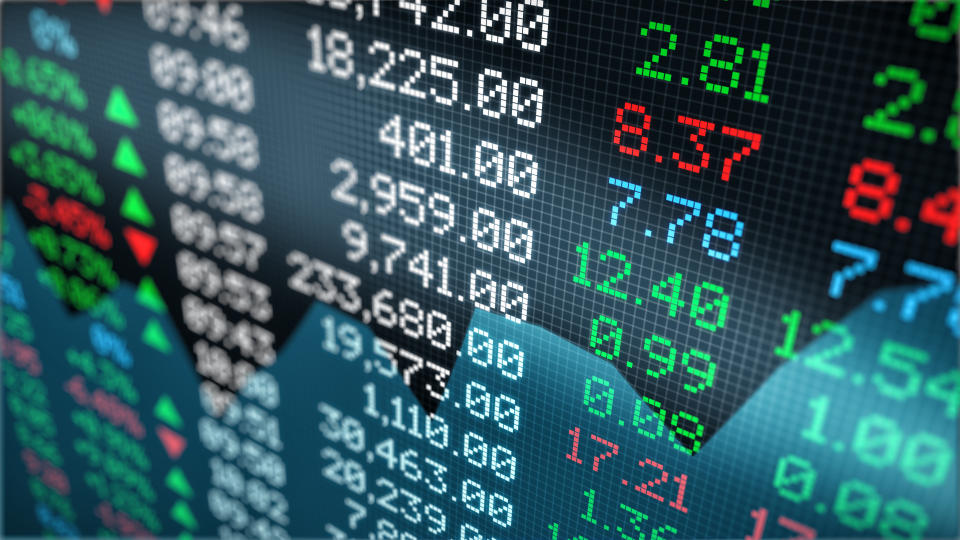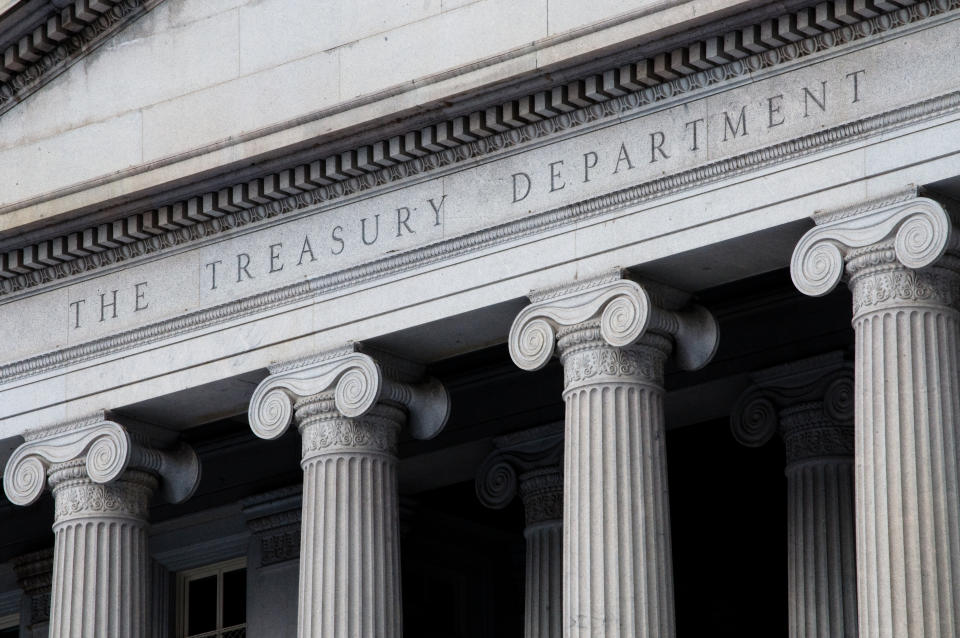Savers, time for your happy dance.
Interest rates will stay higher for longer in 2024. The Federal Reserve held interest rates at a 23-year high this week while curtailing its estimate of rate cuts this year from three to one.
Elevated rates are certainly sweet news for short-term savers, “with the top yields on savings accounts, money markets, and CDs handily outpacing the rate of inflation,” Greg McBride, chief financial analyst at Bankrate.com, told Yahoo Finance.
“These rates should remain above the inflation rate for at least the next year, which makes them a great place for an emergency fund or any savings intended for short-term goals or expenses,” added Ken Tumin, a senior industry analyst at LendingTree.
That said, the current rate environment is even more fortuitous for retirees and those nearing retirement. I talked to several wealth management advisers to understand how those groups should approach investment decisions.
Read more: What the Fed rate decision means for bank accounts, CDs, loans, and credit cards
Go for the high rates
Retirees often overlook setting aside enough cash to cover living expenses for a year or two after retirement. There’s no time like the present to stockpile cash in low-risk, fixed-income investments, such as Treasury securities and CDs.
One easy way to do that is to shave some of the profits from your equity holdings in your retirement and non-retirement accounts, which have been on a tear this past year. The S&P 500 index (^GSPC), for instance, is up over 24% in the past 12 months.
“When you hit retirement and start taking out money from your investment and retirement accounts, and markets take a turn for the worse, retirees can find themselves in a position where they are selling their investments that are down in value to raise the cash that they need,” Jake Sadler, founder and senior adviser at Curio Wealth, in Annapolis, Md., told Yahoo Finance.
“If this goes on for too long, especially at the beginning of retirement, it can permanently reduce the odds that your money will last for your lifetime,” he said.
One strategy, especially for those close to retirement: “Build a ‘risk-free’ buffer of cash using high-yield CDs and money market accounts with the higher rates now that you can draw from if markets start working against you in the first years of retirement,” he said.
>> Learn more about high-yield savings accounts, money market accounts, and CD accounts.
The most ‘alluring’ options
Some certificates of deposit and high-yield savings accounts now offer rates of more than 5%. The most alluring CD rates — offered mainly through online banks — were recently around 5.65% for a 1-year certificate.
“These provide retirees a valuable opportunity to keep pace with inflation while keeping cash accessible,” Michael A. Scarpati, founder and CEO of RetireUS, told Yahoo Finance.
While most bond funds have the same yields as savings and money markets, they hold more risk and aren’t FDIC-insured.
“In this climate of high interest rates and uncertainty, high-yield cash investments are really the move. No need to add extra risk if we can get the same returns in cash positions while maintaining peace of mind,” he said.


Don’t abandon equities
This, however, is not an all-or-nothing game.
Higher interest rates on CDs and money markets are worth cheering for, but long-term returns in stocks are still a bigger factor for your financial security when you consider your lifespan. Most people don’t consider longevity when they plan for retirement.
Having enough money to live in retirement, possibly for three decades, can be a stretch. Adding to that challenge: Soaring costs for everything from groceries to healthcare and home insurance have been unrelenting.
Nearly half of all retirees report their expenses in retirement are higher than they expected, and about half believed Medicare would cover more of their healthcare expenses, according to a recent survey from investment manager Schroders.
Owning stocks is a key for many retirees, even decades after they step out of the workforce. The possibility of living to 100 screams the need to have some longer-term growth juicing up your investment returns.
The standard advice today is to take 125 minus your age (it used to be 110), and that’s the percentage of your retirement savings that should be invested in equities. For a 65-year-old, with a moderate risk tolerance, for instance, her retirement account might be as much as 60% in stocks. That’s to take advantage of the upside potential growth over time that stocks typically deliver when compared with fixed-rate options such as bonds, money markets, or CDs.
If you really want to keep it simple, you might do what Jordan Belfort, author of “The Wolf of Investing,” told me: Stick to an S&P 500 index fund, which so far this year is up 10.99% and has gained about 10.7% on average annually since it was introduced in 1957.


The advantage of T-bills
Another benefit of the Fed holding the higher interest rate steady is that all savers looking for a safe investment for a year or less can still get the best yields in years from Treasury bills, or T-bills, short-term securities issued by the federal government. On June 12, a one-year T-bill rate was at 5.13% and a six-month T-bill was at 5.38%. The three-month T-bill was yielding 5.25% on June 11.
As long as the Fed keeps interest rates high, investing short-term money in T-bills offers moderate returns paired with tax savings since they are exempt from state and local tax.
“T-bill yields remain higher than most online savings accounts and short-term CD yields and the tax benefit is key,” Tumin said.
You can buy newly issued Treasurys in terms ranging from four weeks to 52 weeks through your bank or brokerage, which may charge a commission. You can also buy them online for a minimum of $100 through the government’s TreasuryDirect program, with no commission.
Read more: Types of U.S. savings bonds and how they work


No risk of losing money
A side benefit of shifting a portion of your savings to cash accounts is that you’ll be prepared for big-ticket expenses that often arise post-retirement.
“The first phase of retirement can be an exciting time,” Sadler said. “This phase often comes with a feeling of delayed gratification, and large expenses are very common during this time — think travel, new car, renovations, and celebrations.”
Since you know you’ll need the money, say within 1 to 5 years, cash is a great place to save, he said. “There is no risk of losing money, and with higher rates, you can earn more on what you save during that time.”
One caveat: Remember that your reasons for holding cash don’t always change even when interest rates drop. “If saving more in cash serves a specific purpose, then honor that purpose,” Sadler said. “Safety is often far more important than yield when it comes right down to it.”
Kerry Hannon is a Senior Columnist at Yahoo Finance. She is a career and retirement strategist, and the author of 14 books, including “In Control at 50+: How to Succeed in The New World of Work” and “Never Too Old To Get Rich.” Follow her on X @kerryhannon.
Read the latest financial and business news from Yahoo Finance














